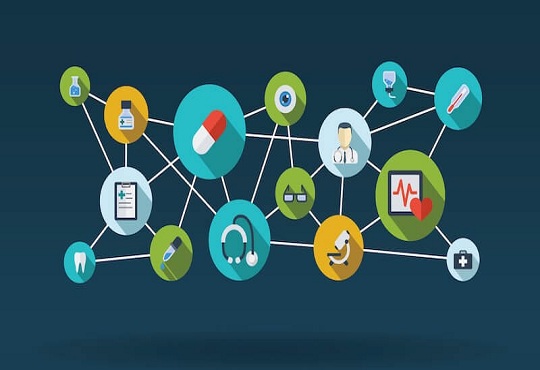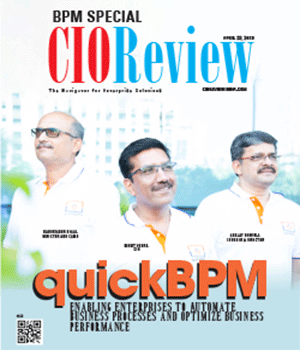
How interoperability can streamline business operations
Abhrasnata Das | Friday, 02 December 2022, 13:42 IST
 Interoperability is becoming increasingly valuable across the economy as organizations of all kinds undergo digital transformation and adopt new software. The average organization currently uses 110 software-as-a-service solutions, up from just eight in 2015. This number may increase as businesses invest more heavily in technology.
Interoperability is becoming increasingly valuable across the economy as organizations of all kinds undergo digital transformation and adopt new software. The average organization currently uses 110 software-as-a-service solutions, up from just eight in 2015. This number may increase as businesses invest more heavily in technology.
Coordinating and orchestrating these solutions can be a significant undertaking. Without interoperability, businesses effectively need to develop entirely new solutions or workflows that allow for communication between different tools in the software stack. In some cases, they may need to create manual processes to exchange data between two solutions.
Interoperability makes integrating these diverse solutions much easier — or even more seamless. In this article, we have listed the key advantages of interoperability for enterprises.
Re-innovating Supply Chain
The ongoing supply chain disruptions have made it clear that supply chain partners should share their data more. One way to do this is to implement interoperability, which involves linking businesses' automated and computerized systems to speed up information exchange.
Interoperability has made significant strides in recent years. The many technologies that businesses employ are no longer insurmountable obstacles. “Modern cloud technology and the Industrial Internet of Things offer solutions to the technological challenges of data sharing and interoperability across the supply chain,” says Tarek Kasah, associate partner, at McKinsey & Company.
For instance, international retail chains may promote interoperability in the food and beverage supply chain in order to benefit from the data shared by their supply chain partners. But for some, the value may also lie in their capacity to respond to inquiries from clients regarding the source of the raw materials used to make their goods.
It's crucial to realize that not all supply chain partners enjoy the same benefits from interoperability and data sharing. “To make this data exchange lucrative and in the interest of both parties, respective terms and conditions need to be identified and agreed upon at the start of forming a supplier partnership,” Kasah said. The partners will have to decide how data will be shared, what data standards they'll use, and who is entitled to ownership and access rights.
Boosting the Healthcare Ecosystem
For many years, delays in the delivery of paper patient records or test results have prevented or delayed doctors from seeing the big picture and completing correct diagnoses and treatment regimens.
Providers may treat patients with the fewest errors possible thanks to interoperable EHR systems, which provide them quick access to access healthcare data. Even so, it might lessen the number of lawsuits that these experts have to deal with each year.
Additionally, patients gain from knowing that their medical data are accurate, thorough, and portable. A new provider will have quick access to their medical history, regardless of whether they relocate locally or across the nation. In some circumstances, faster data distribution might result in very tangible health benefits for an individual, such as quicker treatments and fewer testing requirements.
In the healthcare industry, EHR interoperability is crucial for improving provider work conditions, improving patient care and outcomes, and generally saving money for the healthcare company.
In order to increase productivity, reduce wasteful diagnostic testing, and improve communication between referring physicians and specialists, interoperability guarantees that patient data is reliably exchanged throughout providers and organizations.
Currently, FHIR is a crucial component of the national interoperability roadmap created by the National Coordinator for Health IT in the United States. It is crucial for healthcare companies to comprehend FHIR and implement it into their interoperability strategy, especially those that receive reimbursements for Medicare or Medicaid services. New government laws and interoperability guidelines are forcing a greater use of FHIR.
Enhancing the Accounting Institutions
Different payment infrastructures and financial service providers can process payments between clients thanks to payment interoperability. Interoperability increases the utility of transaction accounts and retail payment instruments for end users by extending their reach.
Payments are a fundamental financial service in and of itself, but when they are made from a transaction account, they also operate as a key entry point for the supply of other digital financial services including savings, credit, insurance, and even investment products.
Targeting the financially excluded and underserved is possible with the help of digital transactional platforms that allow transfers, value storage, and additional services. These platforms are increasingly provided by banks, non-banks, and even nonfinancial companies like retail networks and mobile network operators (MNOs) in intricate partnerships.
These efforts to deliver other financial services off of a digitally accessed transaction account means that the expanded reach offered by interoperability can have even greater significance for those who are financially excluded or underserved.
Key for 21st Centuary Businesses
Businesses are required to manage a sizable volume of data coming from several devices. Organizations are now required by this new environment to create technologies that allow all of their systems to communicate with one another. To take advantage of the benefits of Big Data, all systems must be able to communicate with and comprehend one another.
Applying this kind of technology enables more fluid communication between various interconnected systems, enables systems to automatically manage data input and output based on demand to increase efficiency and accelerate change adaptation, and improves user access to data, increasing productivity and control.
CIO Viewpoint
Enabling An Effective Workforce With The Proper...
By Daniel M. Horton, CIO, Sallyport Global
Three Ways To Build A Gmail Security Conscious...
By Niraj Ranjan Rout, Co-founder & CEO, Hiver
By Sreenivas Pamidimukkala, CIO, International Paper
CXO Insights
Looking towards Operations Management: What...
By Dr. Vandana Sonwaney, Director, SIOM
Strategic Implementation And Control
By SURESH.V. MENON-PRINCIPAL CONSULTANT SIX SIGMA & STRATEGIC MANAGEMENT, ADVISORY (BUSINESS EXCELLENCE)
Grand Strategies Used In Strategic Management









